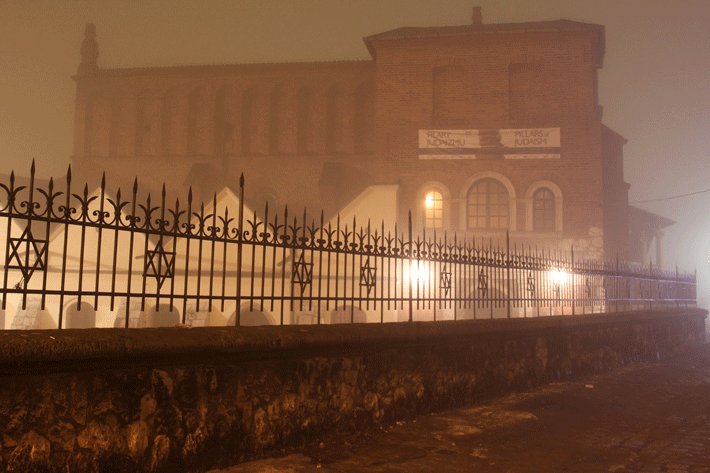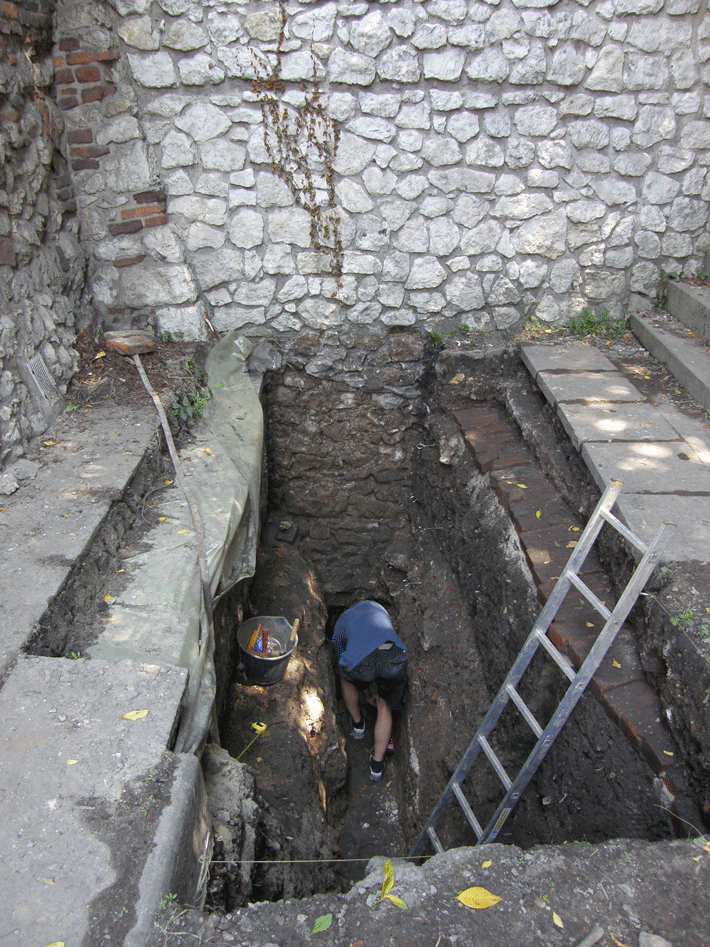Off the Grid
March/April 2015
 Krakow, one of Poland’s oldest cities, is well-known for its churches, but it also hosts the country’s most significant collection of Jewish monuments and buildings. At the end of the fifteenth century, the city’s Jewish population was driven out of the center and directed to settle in the district of Kazimierz. Known as the Oppidum Iudaeorum, or “Jewish City,” it grew into a religious and cultural center for the region’s Jews. By the 1930s more than 60,000 lived there, but the Nazi occupation rendered the district a virtual ghost town. Recently scholars, historians, and archaeologists have taken a new interest in the area. Dariusz Niemiec of the Institute of Archaeology of the Jagiellonian University and a team of students are excavating in and around the Old Synagogue, the country’s oldest standing example, in the heart of the Oppidum Iudaeorum. It has a long and storied history that follows the fortunes of Poland, from the building’s initial construction in the Gothic style in the beginning of the fifteenth century, to its reconstruction in 1570 by the workshop of Renaissance architect and sculptor Mateo Gucci, to a visit from Tadeusz Kosciuszko, who led a Polish uprising against Russian and Prussian rule in the late eighteenth century, to the twentieth century, when it was looted by the Nazis.
Krakow, one of Poland’s oldest cities, is well-known for its churches, but it also hosts the country’s most significant collection of Jewish monuments and buildings. At the end of the fifteenth century, the city’s Jewish population was driven out of the center and directed to settle in the district of Kazimierz. Known as the Oppidum Iudaeorum, or “Jewish City,” it grew into a religious and cultural center for the region’s Jews. By the 1930s more than 60,000 lived there, but the Nazi occupation rendered the district a virtual ghost town. Recently scholars, historians, and archaeologists have taken a new interest in the area. Dariusz Niemiec of the Institute of Archaeology of the Jagiellonian University and a team of students are excavating in and around the Old Synagogue, the country’s oldest standing example, in the heart of the Oppidum Iudaeorum. It has a long and storied history that follows the fortunes of Poland, from the building’s initial construction in the Gothic style in the beginning of the fifteenth century, to its reconstruction in 1570 by the workshop of Renaissance architect and sculptor Mateo Gucci, to a visit from Tadeusz Kosciuszko, who led a Polish uprising against Russian and Prussian rule in the late eighteenth century, to the twentieth century, when it was looted by the Nazis.
 The site
The site
The Old Synagogue is a rare surviving example of what is known as a “fortress synagogue,” so called for its features borrowed from military architecture. Its windows, for example, are placed far above ground level, and its thick walls are buttressed to withstand assault. After restoration in the 1950s, the synagogue was opened as part of the Historical Museum of the City of Krakow. Niemiec’s archaeological work is focused on the exterior courtyard and aims to identify the oldest parts of the foundation and the cultural layers associated with them. Visitors today can see exhibits on various aspects of Jewish life in Krakow, as well as Cracovia Iudaeorum 3D, a digital reconstruction of the history of the district supplemented with archaeological finds, including ceramic vessels with Hebrew inscriptions.
While you’re there
It would take weeks to visit all of Krakow’s historical sites, but visitors should start with the city’s Old Town, a UNESCO World Heritage SIte brimming with cafes and shops and a main square that is the largest medieval square in Europe. The Wawel Royal Castle complex, overlooking the Vistula River, once a royal residence, today contains a priceless collection of sixteenth-century Flemish tapestries. More recent history is reflected at the site of the Płaszów concentration camp and Oskar Schindler’s Factory, which houses a museum dedicated to the story behind Steven Spielberg’s Schindler’s List.